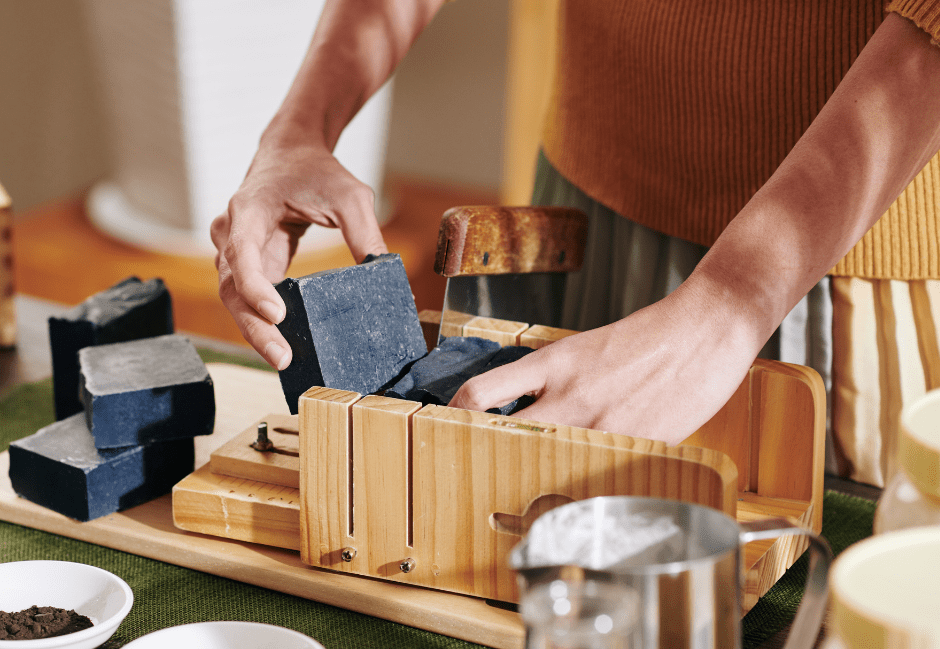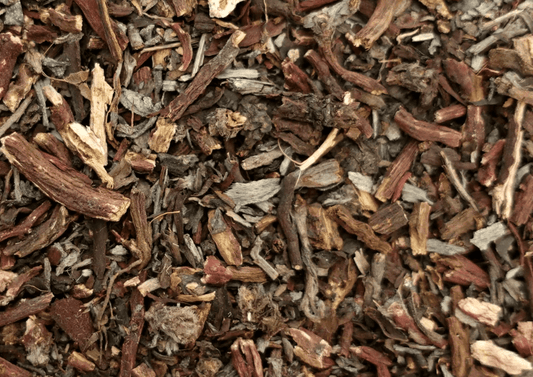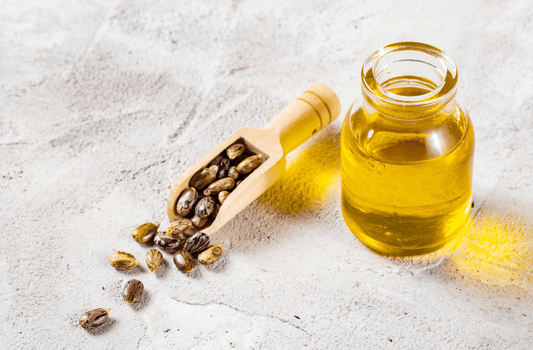Want to make your own soap recipes?
A key part to soap making is understanding saponification (SAP) values. Don’t worry, it’s not as complicated as it sounds!
By the end of this blog, you’ll understand exactly what SAP values are and how to make your own soap recipe!
So let’s start from the beginning…
Contents
- What is Saponification?
- What are Saponification Values?
- How to Use Saponification Values?
- Saponification Chart
- How to Work Out the Rest of the Recipe?
What is Saponification?
Saponification is the reaction that turns oils into soap. Soap recipes are a mixture of oils, water and an alkali.
The alkalis normally used in soap making are sodium hydroxide and potassium hydroxide. Sodium hydroxide is used to make a solid soap bar and potassium hydroxide is used to make liquid soap.

What are Saponification Values?
The saponification (SAP) value is based on the fatty acids of the oil.
The saponification value shows how much of the alkali (sodium hydroxide or potassium hydroxide) is needed to turn the oil into soap.
Each oil has its own saponification value and the amount of the alkali needed will vary depending on the oil. So the higher the SAP value, the more alkali is required to saponify all the oils.
How to Use Saponification Values?
TIP: Before you start calculating how much alkali you need to make your soap, make sure you are using grams, not millilitres! I know we normally measure liquids in millilitres, but grams are much more accurate for these calculations. Not sure how to convert your oil into grams? Use our carrier oil calculator!

To calculate the amount of potassium hydroxide (KOH) you need to use, you need to divide the vegetable oils’ saponification value by 1000. Then times that number by the weight of oil to get your amount.
For example: Let’s say you are making a liquid soap and you want to use 100g of almond oil. To start you want to find the SAP value for almond oil (which is 195), then divide that by 1000 to make 0.195. Now times that number by the 100g of almond oil to make 19.5g of potassium hydroxide.
For sodium hydroxide (NaOH), you need to divide the oils’ saponification value by 1403. Then times that number by the weight of oil to get your amount.
For example: If you want to make a solid soap bar and you are using 500g of olive oil, you need to divide the SAP value (which is 190) by 1403, to make 0.135. Then times that by the 500g of olive oil to make 67.7g of sodium hydroxide.
So what about calculating how much alkali is needed for multiple oils? First you need to work out how much you need for each oil and then add all of those together.
For example: Let’s say you want to make a solid soap bar and you’re using 320g olive, 240g coconut oil and 240g mango butter. We first need to calculate each one individually (like we did earlier).
- Olive oil: SAP value is 190, divide that by 1403 = 0.135. Now times that by 320g to make 43.3g
- Coconut oil: SAP value is 255, divide that by 1403 = 181. Now times that by 240g to make 43.62g
- Mango butter: SAP value is 189, divide that by 1403 = 0.134. Now times that by 240g to make 32.33g
- Now we need to add all of those together (43.3 + 43.62 + 32.33) which makes 119.25g sodium hydroxide.
If you are having problems with your recipe, check out our troubleshooting blog! This covers the most common problems in soap making.
If you want to superfat this soap, you can simply discount 5% off the sodium hydroxide or potassium hydroxide. Find out more about superfatting soap here.
Saponification Chart
Finding the SAP values for lots of oils can be time consuming, so we’ve created a simple chart for all of our oils.
Here is a table you can use to find the SAP value, KOH value and NaOH values:
|
Oil/ Fats |
SAP |
KOH |
NaOH |
|
190 |
0.19 |
0.135 |
|
|
189 |
0.189 |
0.134 |
|
|
190 |
0.19 |
0.135 |
|
|
190 |
0.19 |
0.135 |
|
|
190 |
0.19 |
0.135 |
|
|
195 |
0.195 |
0.139 |
|
|
196 |
0.196 |
0.140 |
|
|
192 |
0.192 |
0.137 |
|
|
191 |
0.191 |
0.136 |
|
|
190 |
0.19 |
0.135 |
|
|
250 |
0.25 |
0.178 |
|
|
196 |
0.196 |
0.140 |
|
|
185 |
0.185 |
0.132 |
|
|
190 |
0.19 |
0.135 |
|
|
193 |
0.193 |
0.138 |
|
|
190 |
0.19 |
0.135 |
|
|
188 |
0.188 |
0.134 |
|
|
191 |
0.191 |
0.136 |
|
|
182 |
0.182 |
0.129 |
|
|
182 |
0.182 |
0.129 |
|
|
193 |
0.193 |
0.138 |
|
|
195 |
0.195 |
0.139 |
|
|
195 |
0.195 |
0.139 |
|
|
328 |
0.328 |
0.234 |
|
|
255 |
0.255 |
0.182 |
|
|
255 |
0.255 |
0.182 |
|
|
255 |
0.255 |
0.182 |
|
|
190 |
0.19 |
0.135 |
|
|
185 |
0.185 |
0.132 |
|
|
185 |
0.185 |
0.132 |
|
|
192 |
0.192 |
0.137 |
|
|
188 |
0.188 |
0.134 |
|
|
190 |
0.19 |
0.135 |
|
|
190 |
0.19 |
0.135 |
|
|
190 |
0.19 |
0.135 |
|
|
191 |
0.191 |
0.136 |
|
|
191 |
0.191 |
0.136 |
|
|
191 |
0.191 |
0.136 |
|
|
90 |
0.09 |
0.06 |
|
|
90 |
0.09 |
0.06 |
|
|
197 |
0.197 |
0.14 |
|
|
197 |
0.197 |
0.14 |
|
|
191 |
0.191 |
0.136 |
|
|
189 |
0.189 |
0.134 |
|
|
189 |
0.189 |
0.134 |
|
|
169 |
0.169 |
0.12 |
|
|
193 |
0.193 |
0.138 |
|
|
234 |
0.234 |
0.167 |
|
|
198 |
0.198 |
0.141 |
|
|
198 |
0.198 |
0.141 |
|
|
190 |
0.19 |
0.135 |
|
|
190 |
0.19 |
0.135 |
|
|
192 |
0.192 |
0.137 |
|
|
191 |
0.191 |
0.136 |
|
|
191 |
0.191 |
0.136 |
|
|
185 |
0.185 |
0.132 |
|
|
178 |
0.178 |
0.127 |
|
|
194 |
0.194 |
0.138 |
|
|
188 |
0.188 |
0.134 |
|
|
188 |
0.188 |
0.134 |
|
|
188 |
0.188 |
0.134 |
|
|
188 |
0.188 |
0.134 |
|
|
192 |
0.192 |
0.137 |
|
|
190 |
0.19 |
0.135 |
|
|
190 |
0.19 |
0.135 |
|
|
182 |
0.182 |
0.129 |
|
|
186 |
0.186 |
0.133 |
|
|
189 |
0.189 |
0.134 |
|
|
195 |
0.195 |
0.139 |
|
|
195 |
0.195 |
0.139 |
|
|
195 |
0.195 |
0.139 |
|
|
235 |
0.235 |
0.167 |
|
|
226 |
0.226 |
0.161 |
|
|
187 |
0.187 |
0.133 |
How to Work Out the Rest of the Recipe?
Now you know how much potassium or sodium hydroxide your recipe needs, what about water, fragrances or colour?
So how much water do you need? The amount of water we recommend using is about 30% of the total weight of other ingredients.
If you are adding essential oils or fragrance oils, you need to check the IFRA document for the oils you are using. This will outline the maximum usage rates for soap products. We would probably suggest working with a maximum of 30g of essential oil per kilo of oils. But if the IFRA says that will be unsafe then you must follow the usage rates that it gives you!
When it comes to adding colours, there is a whole range of products with their own specifications. If you are keeping it natural and using mica powders, we recommend adding up to 3% to 5% to the recipe. Learn more about our mica powders here.
Continue reading
Now you know all about saponification values and how to make your own soap recipe, why not continue reading?
- Want to learn more about soap making? Find out how to rebatch soap?
- Want to sell your soap but you’re not sure what to do? Check out our guide to selling cosmetics!
- Try something new, with our wheatgrass soap recipe!
Let us know in the comments what soap you are going to make!



